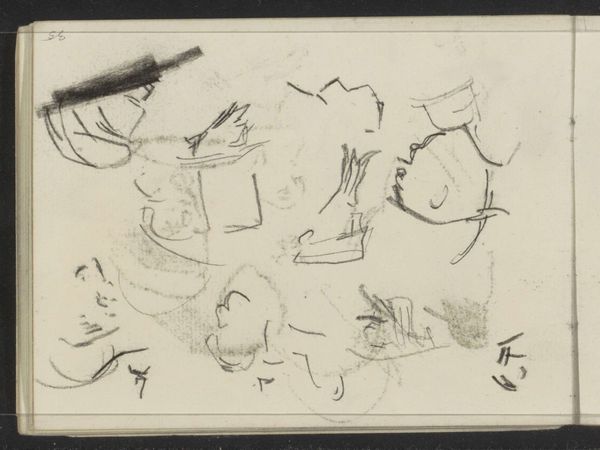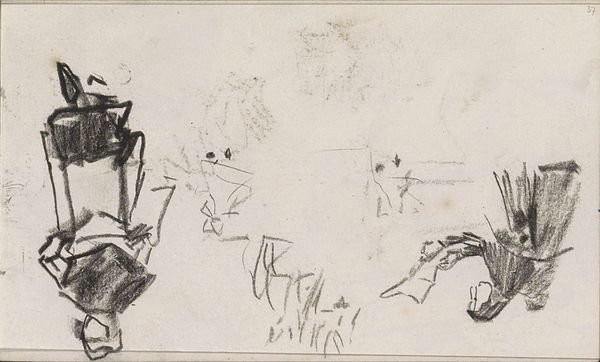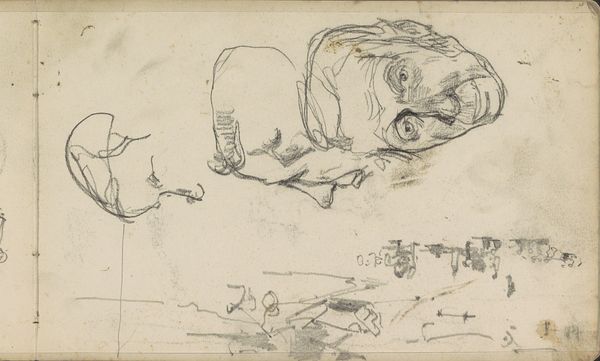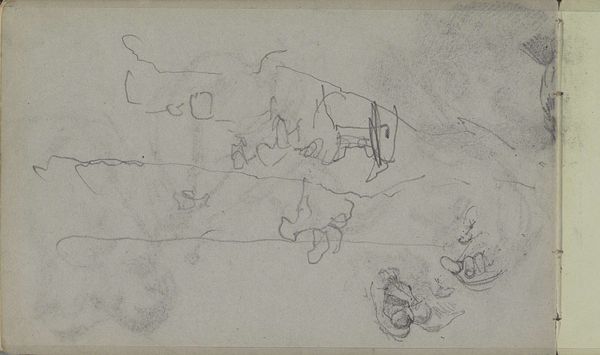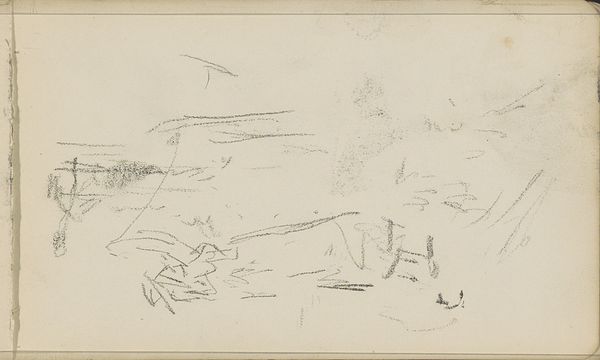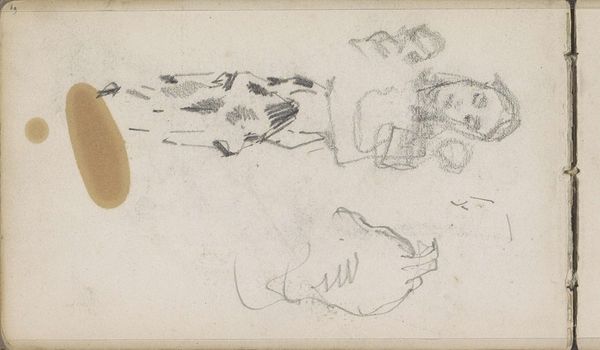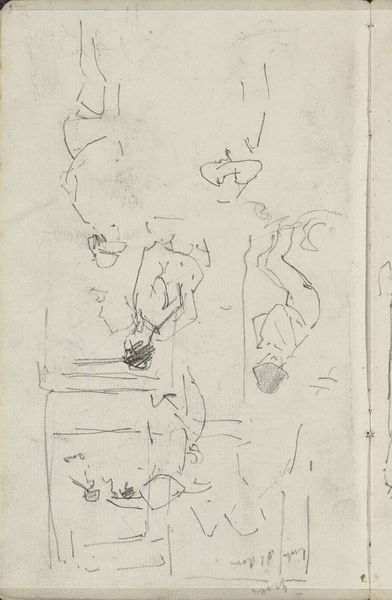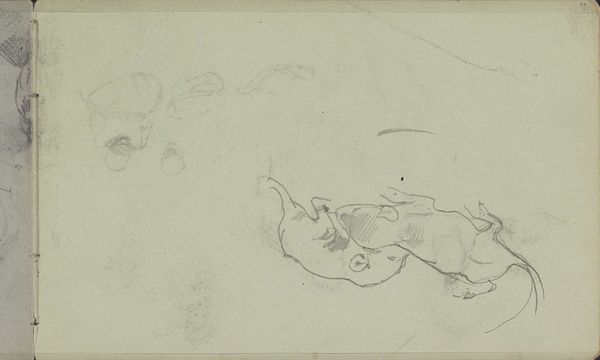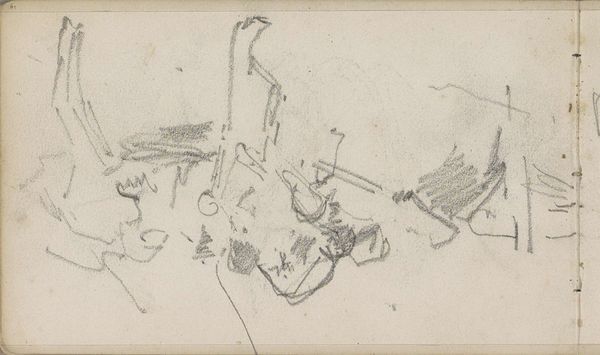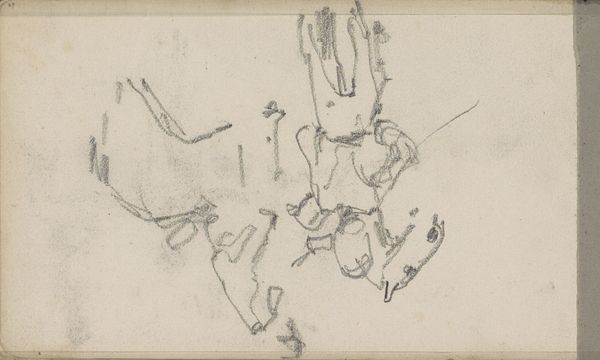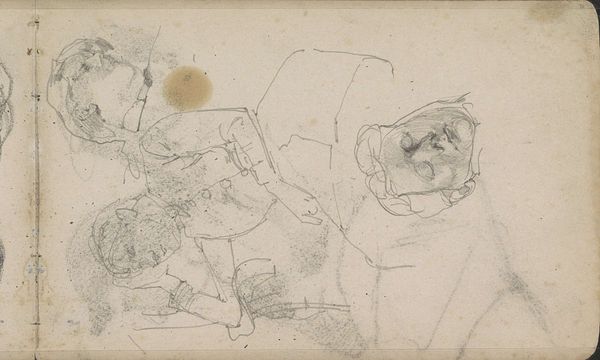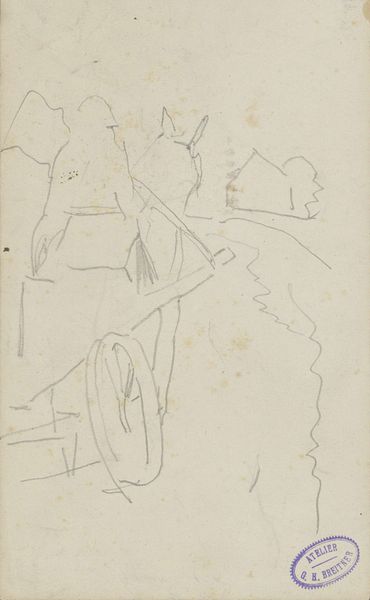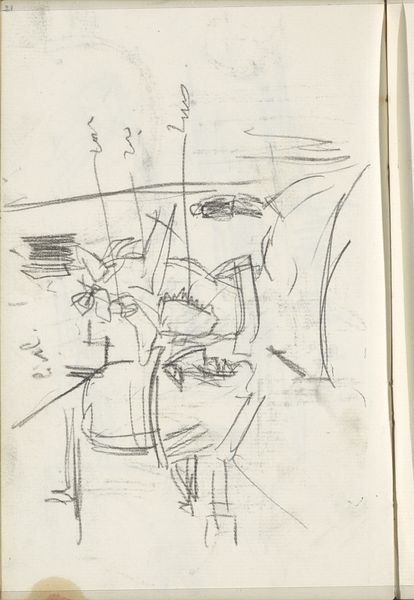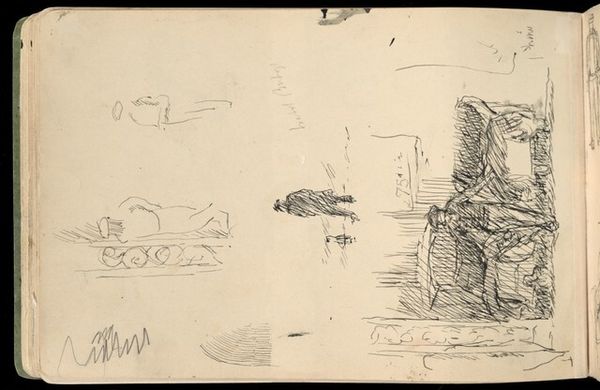
drawing, pencil
#
portrait
#
drawing
#
figuration
#
sketchwork
#
geometric
#
pencil
Copyright: Rijks Museum: Open Domain
Curator: This graphite pencil drawing, created around 1920 by Johan Antonie de Jonge, is entitled "Figuren in verschillende houdingen"—Figures in Various Poses. Editor: Immediately, the rawness jumps out. There's a real sense of immediacy and movement in these swiftly sketched figures. A little haunting, almost. Curator: I find myself pondering the social context of this era, particularly in the Netherlands. Given de Jonge's choice to render human figures in such an unfinished state, one must consider whether there are traces of post-war anxieties. Could this be about portraying fragmented identities following the profound disruptions of World War One? Editor: That reading definitely resonates. For me, the hatching and blurring lend the figures an ephemeral quality, reminding me of classical memento mori. Note also how the repeated visual element creates a rhythm, an almost meditative, cyclical pattern. Are these multiple studies of a single sitter, perhaps? Curator: Precisely! Thinking intersectionally, are there further ways this can be interpreted regarding representation of the human body at this historical juncture? Does the unfinished state indicate an interruption, the intrusion of some disruptive element perhaps indicative of societal constraints that challenge and curtail self-expression, self-representation, self-identity? Editor: It's a striking and insightful interpretation. Also, given how central figuration is to much classical and religious art, one might question if De Jonge wanted to disrupt such traditions and show instead our fleeting human existence. Curator: Absolutely. The rough sketch work prompts us to question traditional, polished forms of figure representation. And maybe it’s even questioning what the public at the time wanted and expected. Editor: I think it captures the spirit of transition, both artistically and socially. Thank you for exploring this pencil drawing together. Curator: It’s been illuminating to re-examine these sketched figures.
Comments
No comments
Be the first to comment and join the conversation on the ultimate creative platform.
